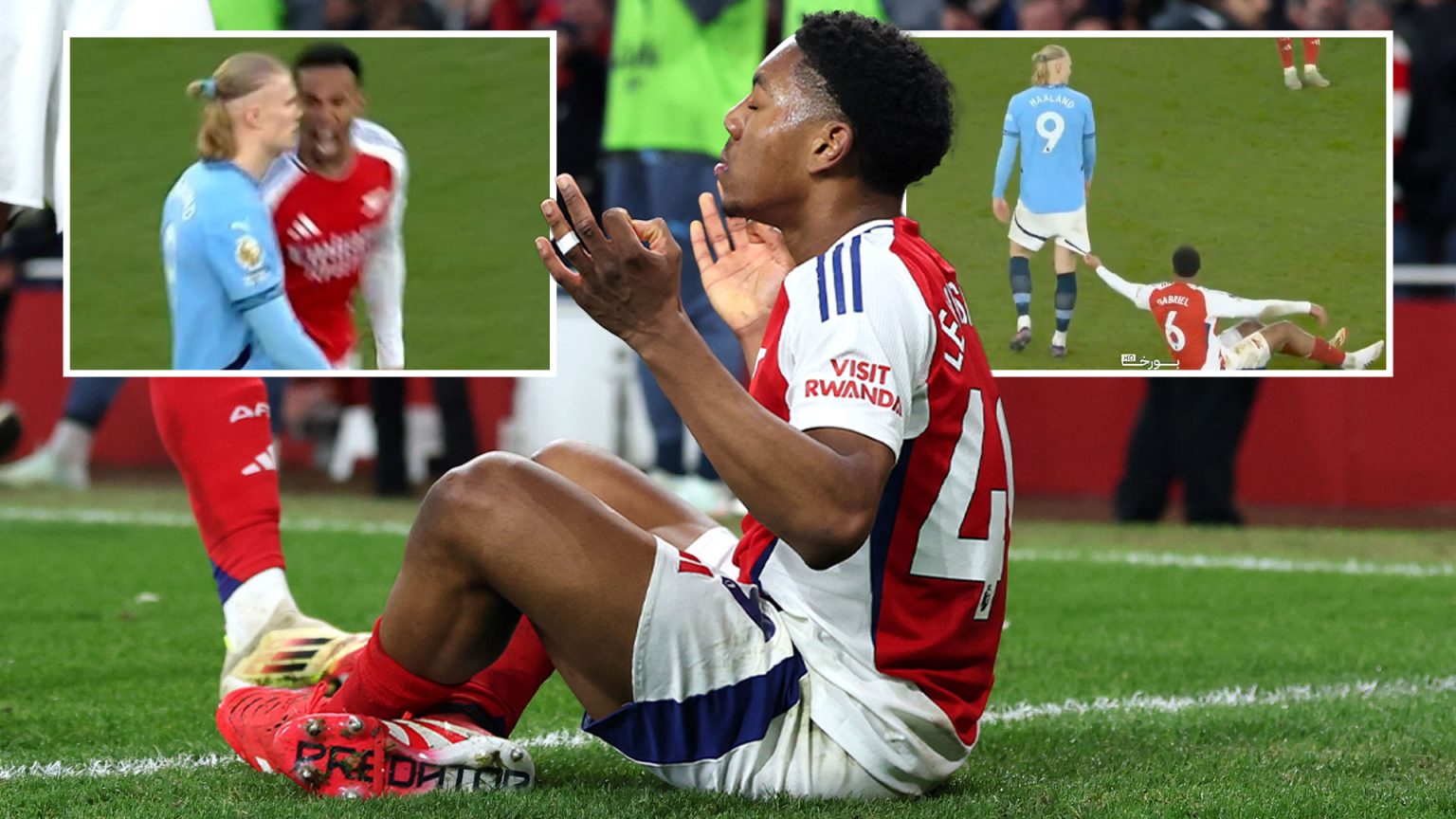Erling Haaland’s pursuit of his 250th club goal coincided with a bruising encounter against Arsenal, a match that transcended the typical football rivalry and became a personal battleground, particularly between Haaland and Arsenal defender Gabriel. The 5-1 thrashing inflicted by Arsenal added insult to injury for Haaland, whose previous two seasons at Manchester City had been marked by Premier League titles and a Golden Boot award. The simmering tension between the two clubs, ignited by Haaland’s “Stay Humble” message to Arsenal manager Mikel Arteta the previous September, found its focal point in this heated exchange.
Gabriel, who had framed the match as a “battle, a war,” lived up to his pre-match rhetoric, engaging in a persistent campaign of physical and psychological warfare against Haaland. From roaring in Haaland’s face after an early Arsenal goal to near-constant niggling and even an attempt to pull down Haaland’s shorts, Gabriel’s actions underscored the intensity of the rivalry. Haaland, for the most part, responded with stoicism, choosing to ignore or downplay Gabriel’s provocations. This restraint, however, did little to quell the Brazilian defender’s relentless pursuit of unsettling the City striker.
The animosity extended beyond the seasoned professionals. 18-year-old Arsenal player Myles Lewis-Skelly, after scoring a stylish goal, opted for a provocative celebration, mimicking Haaland’s signature pose. This gesture, interpreted by some as a blatant taunt, highlighted the pervasive atmosphere of antagonism that enveloped the game. The incident further fueled the narrative of a personal vendetta between the two teams, extending beyond the usual competitive spirit.
The narrative of the match quickly shifted from a straightforward football contest to a character study in composure under pressure. Haaland, despite the relentless harassment and the humiliating defeat, largely maintained his composure. This calm demeanor, in the face of Gabriel’s incessant baiting, drew praise from some quarters, with observers commending Haaland’s mature response to the provocation. Others, however, viewed it as a sign of weakness, suggesting that Haaland should have responded more forcefully to Gabriel’s antics. This divergence of opinion underscored the complex dynamics at play within the match, blurring the lines between gamesmanship and outright disrespect.
The lopsided scoreline, however, told a different story. Arsenal’s dominant performance, punctuated by City’s defensive lapses and their own clinical finishing, exposed a vulnerability in the reigning champions. The 5-1 victory not only handed City a significant defeat but also highlighted a potential shift in the power dynamics of the Premier League. The 15-point gap between City and league leaders Liverpool cast a shadow over their hopes of securing a third consecutive title, a prospect that seemed almost unthinkable just weeks earlier.
The post-match analysis centered on the contrasting approaches of Haaland and Gabriel. While Gabriel’s aggressive tactics were lauded by some as effective gamesmanship, others criticized them as crossing the line into unprofessional conduct. Haaland’s restrained response, in turn, was interpreted as either admirable composure or a missed opportunity to assert himself. This ambiguity fueled the ongoing debate surrounding the acceptable limits of on-field behavior and the role of psychological warfare in professional sports. The match served as a microcosm of the broader discussion regarding sportsmanship and the fine line between competitive spirit and unsportsmanlike conduct.


